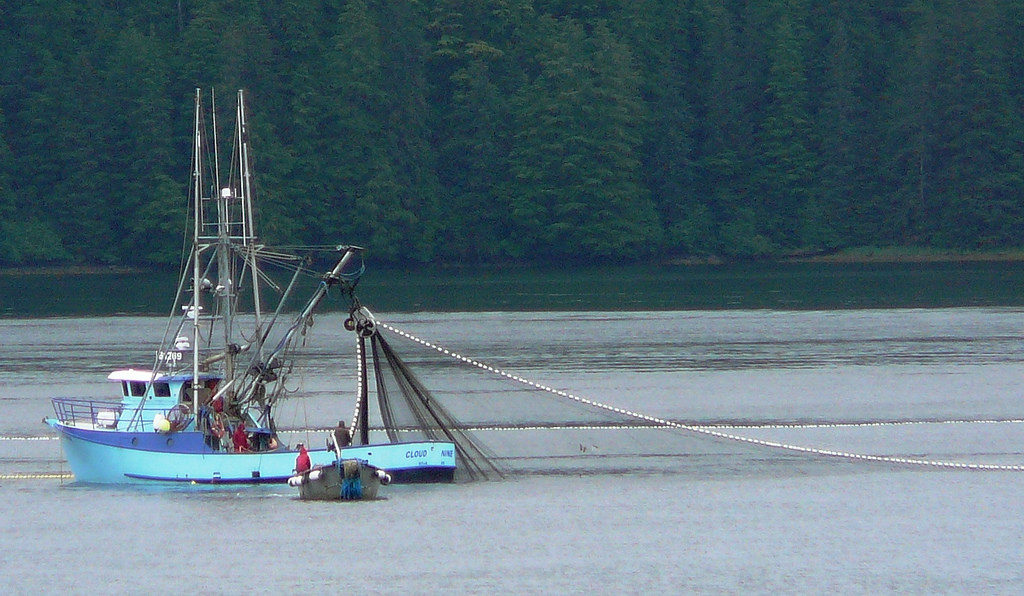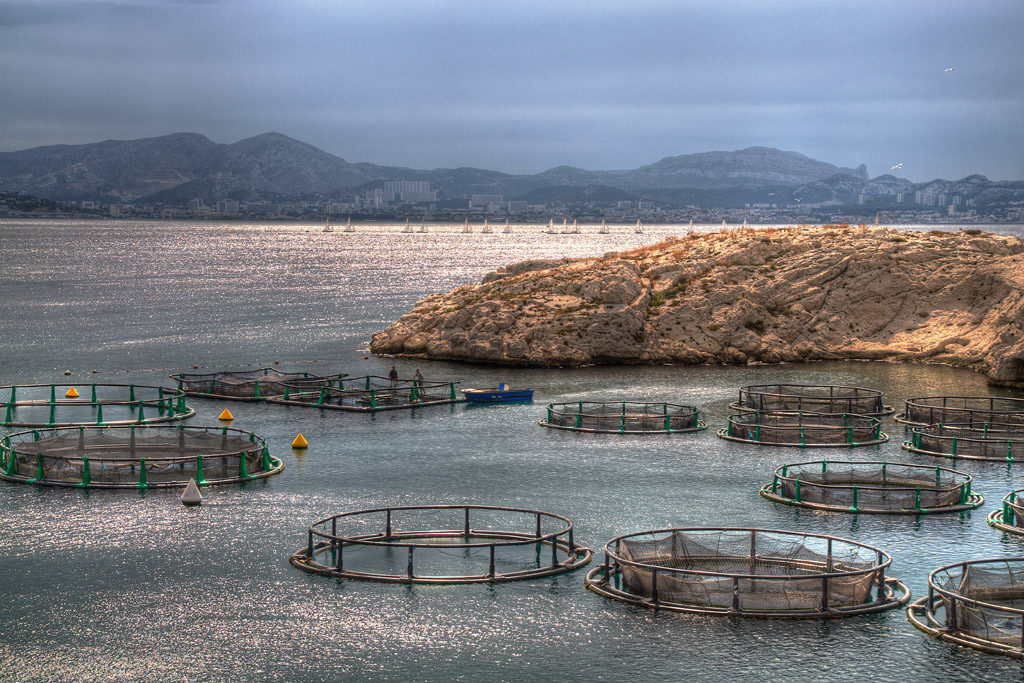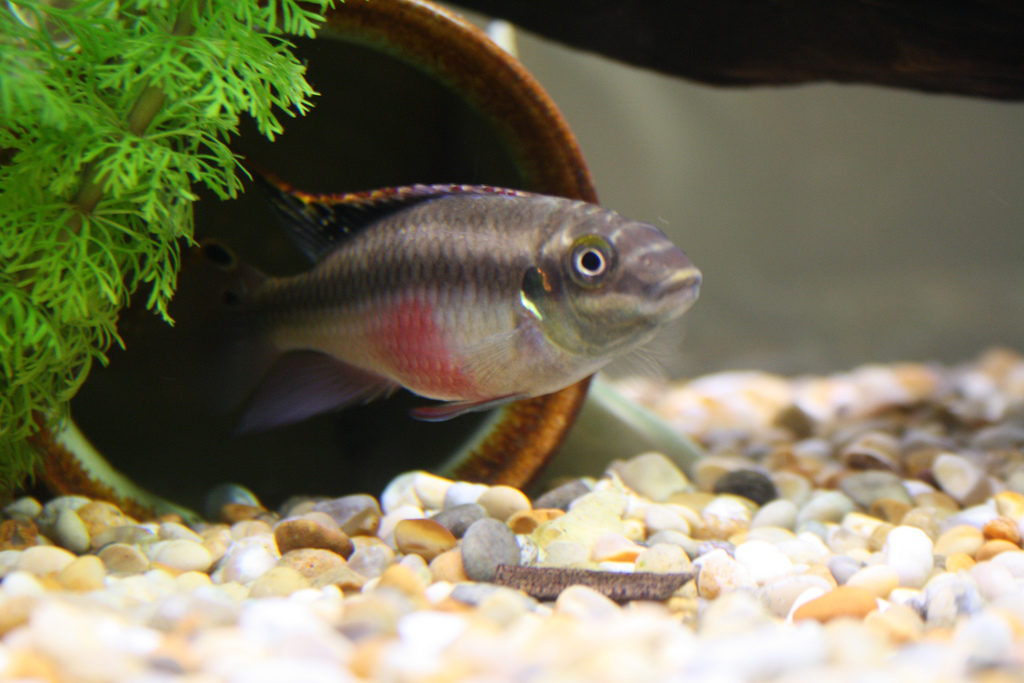The Swiss anti-speciesist association PEA (Pour l’Egalité Animale [For Animal Equality]) is
drawing attention to aquatic animal sentience and to the ways aquatic animals suffer at the hands of humans. They have launched the global campaign “Another Perspective on Fish” to raise awareness of these animals, who are so often forgotten.
Part of this campaign will be the World Day for the End of Fishing (WoDEF), on March 30th, which will call for an end to fishing and fish farming on ethical grounds. Sentient animals, aquatic or not, have their own interests that must be taken into account. More than 70 cities in 17 different countries participated in WoDEF events in 2018.
Part one of the informational exhibition, which focused on aquatic animal sentience, was previously published on Animal People Forum and can be seen here. Below you will find part two. This portion of the exhibition briefly explains the main forms of fish exploitation: commercial fishing, aquaculture farming, the aquarium trade and so-called recreational fishing. We inevitably conclude that we are not entitled to inflict such suffering and death without reason, and that such violent practices should be outlawed.
The final portion of the exhibition, which explains why we must call for the abolition of fisheries and fish farming, will be published on Animal People Forum in the future.
Industrial death
Industrial fishing is extremely brutal and decimates fish. About a quarter of the catch is discarded at sea. A third of it is transformed into fish meal and oil, which is used, in part, to feed farmed animals, including fish and crustaceans. Fishing kills countless billions of fish each year. In most cases, their deaths are neither fast nor painless.
In trawl fishing, a boat chases a shoal of fish with a huge net. Usually, a heavy chain attached to the net scrapes the ocean bottom to dislodge any animals, leaving a path of destruction. Fish are terrorized and swim until they are exhausted. Accumulating at the end of the net, they are compressed together for hours, with various types of debris and rocks accumulating among them. The process often leaves them severely wounded and unable to breathe due to the compression.
When fish are hauled up out of the water, the rapid change in pressure can cause their swimbladder to explode, their eyes to pop out, or their stomach to protrude out of their mouth. Small fish are dumped into ice where they slowly die of asphyxiation, or from being crushed by the weight of additional layers. Bigger fish are usually eviscerated while fully conscious. Meanwhile, unwanted fish, termed “bycatch,” are dumped over the sides of the boat, sometimes with a pitchfork.

A commercial fishing vessel near Sitka, Alaska. Image credit Ed Schoenfeld, CC BY-SA 3.0.
Seines (or dragnets) are used to catch shallow-living fish, such as sardines, anchovies, and herring. Seine fishing vessels set up large vertical dragnets, sometimes miles-long, around fish shoals. These 300 foot high nets constrict on the fish and are hoisted on board. Fish are usually dumped in brine kept at below freezing temperatures. Some fish die from being crushed or asphyxiated in the process. The others die of thermal shock.
Gillnets hang from the surface down to a hundred feet, and fishermen can set up nearly two miles of them before lunchtime. Fish swim into them unaware, and as they try to back out, their gills and fins become entangled in the netting. Many die from asphyxiation. Others fight against the sharp lines of the net, cut themselves and bleed to death. The nets are not retrieved every day and the animals agonize for hours, even days. Captive fish are eaten alive by parasites or preyed on by other fish. When the net is hoisted on board, hooks are used to extract the animals from the net.
Longlines can be miles-long and carry hundreds or thousands of baited hooks. They are often used to catch larger fish, such as swordfish, tuna fish and sharks. Many will swallow the hook, which then rips through their stomach as they struggle. Since some lines are retrieved after several hours, or sometimes days, these fish endure prolonged suffering.
“Bycatch”

In this 2005 image, fish unintentionally caught as “bycatch” lay discarded on the beach. Image credit mwms1916, CC BY-SA 3.0.
Approximately 25% of caught fish are thrown back in the sea, dead, injured or exhausted, because they are too small or unwanted. This massacre is increasing since the adoption of minimum catch sizes and authorized fishing quotas as conservation measures. Young fish are still caught, but now dumped back in the sea, usually dead. When quotas are met for one species, all the fish of this species will be dumped back into the ocean as the fishing goes on to meet quotas for other species.
Overfishing=extermination
We speak of “overfishing” when the onslaught becomes so deadly that entire populations of fish cannot rebuild themselves and fade toward total extinction. Economists and ecologists warn against a collapse of “fishing resources.” In reality, the massacre has already turned into systematic extermination. Ten percent of fish populations were “overexploited” in 1974. By 2011, this number had grown to 30%, and 60% of fish populations were fully exploited.
The scope of the carnage is largely ignored. “Overfishing” has led to the complete collapse of some populations. Despite the continuous development of fishing technologies and the increasing number of fishing vessels, the number of fish caught plateaued twenty years ago, at 90 million metric tons a year. Fishing operations go into deeper and deeper water every year, bringing back increasingly smaller fish. Hence, a ton of fish caught today kills more individuals than ever.
Fishing causes massive extinction among marine species and brings disaster to marine ecosystems. It also causes extreme suffering and countless deaths.

An outdoor fish farm in France. Image credit marcovdz, CC BY-SA 3.0.
Aquaculture: concentrated horror
The world’s production of farmed fish is growing fast. Fish farms now provide more than 50% of the fish and shrimp consumed globally by humans. Hundreds of billions of fish live short, miserable lives, packed in underwater cages, basins or tanks. Some fish farms are prisons to half a million animals.
The lives of fish kept in these overcrowded conditions are full of stress, frustration and aggression. Injuries are
frequent and the animals are afflicted by flesh-eating parasites and constant infections. Mortality rates
are often worse than those of the worst land-based factory farm operations.
Farmed fish are sometimes stunned before slaughter, either through blunt force, electrocution or water saturation in carbon dioxide. The physical blows sometimes injure them without knocking them unconscious. Electrocution leaves 10% of its victims fully conscious. Water saturation has been deemed inhumane by European authorities. Most fish are simply left to die from asphyxiation in open air. Many are bled and eviscerated while still conscious.
Fish farms kill many more animals than land-based factory farms. If we don’t take action, farmed fish production will increase by 29 million metric tons over the next ten years, subjecting countless more lives to this painful and cruel treatment.

Being kept in a tank can be very stressful for fish and often results in early death. Image credit Josh Geddes, CC BY-SA 3.0.
Fish tanks: lifelong confinement
Fish are commonly kept as pets. Hundreds of millions of stressed and vulnerable fish are confined to glass prisons, subjected to temperature variations and water contamination. Unable to hide from threats, they sometimes panic and crash against glass walls, killing themselves. Vibrations from loud noises such as speakers or slammed doors can inflict intense stress.
Confined to explore just a few liters of water and to eat the same food again and again, they often die of boredom. Only 10% survive their introduction into a new tank, and most fish are replaced within a year. Each individual is worth only a few dollars and there are no laws regulating their trade or captivity. Many fish die in transport from the location of their capture or the fish farm. Capture itself kills and injures hundreds of millions of fish. Up to 60% die before exportation. Ornamental fishkeeping is a human whim that has devastating consequences for these animals.

So-called recreational fishing inflicts pain and suffering on fish. Image credit Carol Teitzel / Bureau of Land Management, CC BY-SA 3.0.
Recreational fishing
Pierced by fishing hooks, the victims of recreational fishing fight for their lives and freedom. Dragged by fishing lines for several minutes, fish expel gas from their swim bladders and sink, as they do when subjected to intense and prolonged electric shocks. They sometimes die of exhaustion before even being pulled out of the water. Fishermen often haul larger fish on board by stabbing them with sharp poles, sometimes skinning them
alive. Many fishermen thread ropes through the fish’s mouth and gills to hold them captive for hours
in the water. Recreational fishing subjects them to intense fear and suffering.
Most captured fish slowly die from asphyxiation. Carps can take an hour to suffocate in open air. Even the fish released once captured usually die from their wounds. Many are released with hooks still piercing through their gills or internal organs. They later die from infections, hunger or both. Fishing is also a form of torture to smaller fish used as bait, as hooks are stabbed through their backs, lips and eyes.
Recreational fishing is far from harmless. We are not entitled to inflict such suffering and death without reason. Such violent practices should be outlawed.
This portion of the “Another Perspective on Fish” campaign can be seen in its original form here.
Featured image: Circle hooks used for longline fishing. Image credit Jeff Miller, CC BY-SA 3.0.





